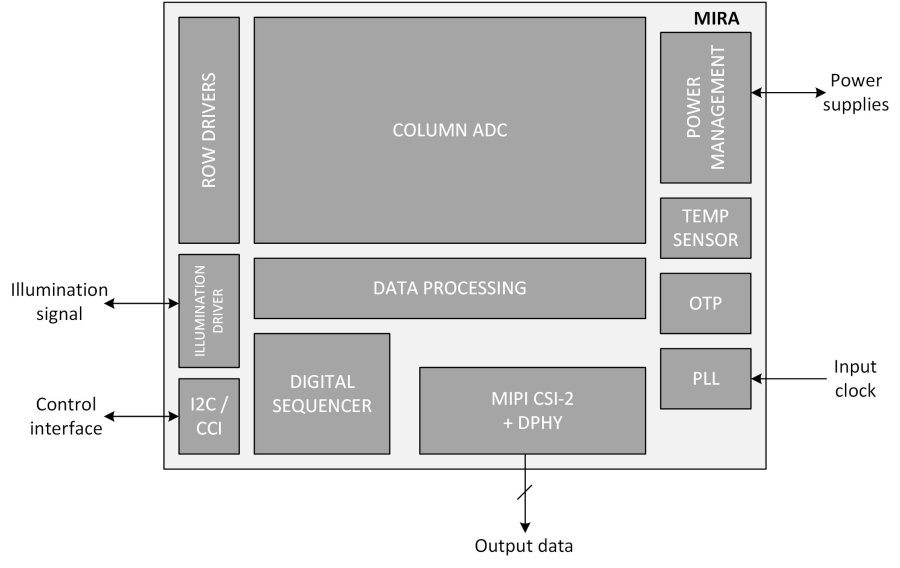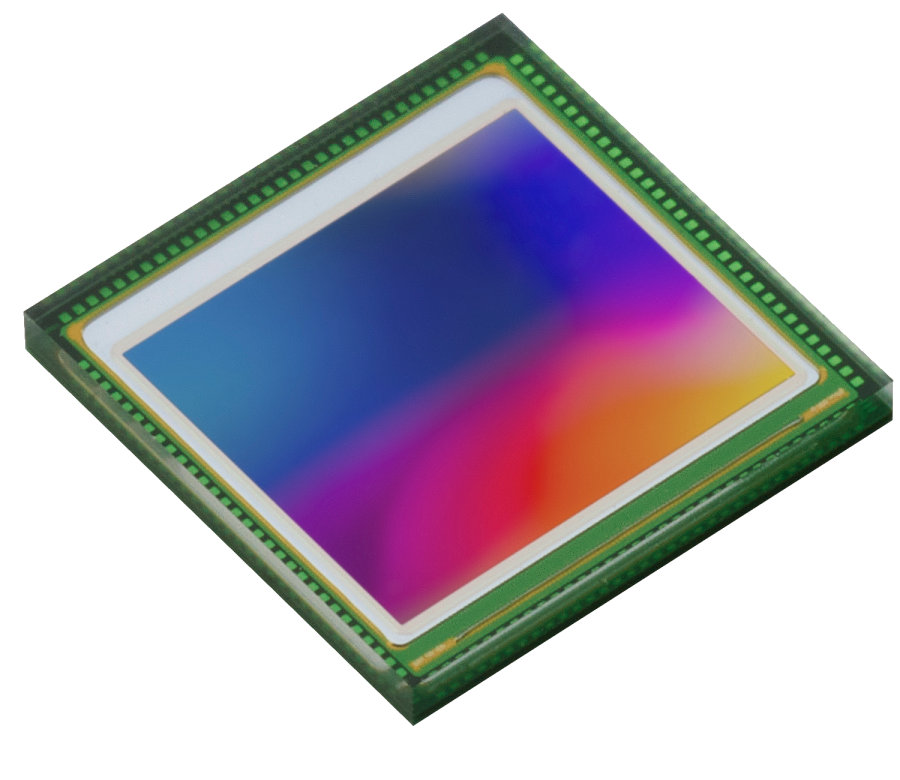- New Mira220 image sensor’s high quantum efficiency enables operation with low-power emitter and in dim lighting conditions
- Stacked chip design uses ams OSRAM back side illumination technology to shrink package footprint to just 5.3mm x 5.3mm, giving greater design flexibility to manufacturers of smart glasses and other space-constrained products
- Low-power operation and ultra-small size make the Mira220 ideal for active stereo vision or structured lighting 3D systems in drones, robots and smart door locks, as well as mobile and wearable devices
Press Release: https://ams-osram.com/news/press-releases/mira220
Premstaetten, Austria (14th July 2022) -- ams OSRAM (SIX: AMS), a global leader in optical solutions, has launched a 2.2Mpixel global shutter visible and near infrared (NIR) image sensor which offers the low-power characteristics and small size required in the latest 2D and 3D sensing systems for virtual reality (VR) headsets, smart glasses, drones and other consumer and industrial applications.
The new Mira220 is the latest product in the Mira family of pipelined high-sensitivity global shutter image sensors. ams OSRAM uses back side illumination (BSI) technology in the Mira220 to implement a stacked chip design, with the sensor layer on top of the digital/readout layer. This allows it to produce the Mira220 in a chip-scale package with a footprint of just 5.3mm x 5.3mm, giving manufacturers greater freedom to optimize the design of space-constrained products such as smart glasses and VR headsets.
The sensor combines excellent optical performance with very low-power operation. The Mira220 offers a high signal-to-noise-ratio as well as high quantum efficiency of up to 38% as per internal tests at the 940nm NIR wavelength used in many 2D or 3D sensing systems. 3D sensing technologies such as structured light or active stereo vision, which require an NIR image sensor, enable functions such as eye and hand tracking, object detection and depth mapping. The Mira220 will support 2D or 3D sensing implementations in augmented reality and virtual reality products, in industrial applications such as drones, robots and automated vehicles, as well as in consumer devices such as smart door locks.
The Mira220’s high quantum efficiency allows device manufacturers to reduce the output power of the NIR illuminators used alongside the image sensor in 2D and 3D sensing systems, reducing total power consumption. The Mira220 features very low power consumption at only 4mW in sleep mode, 40mW in idle mode and at full resolution and 90fps the sensor has a power consumption of 350mW. By providing for low system power consumption, the Mira220 enables wearable and portable device manufacturers to save space by specifying a smaller battery, or to extend run-time between charges.
“Growing demand in emerging markets for VR and augmented reality equipment depends on manufacturers’ ability to make products such as smart glasses smaller, lighter, less obtrusive and more comfortable to wear. This is where the Mira220 brings new value to the market, providing not only a reduction in the size of the sensor itself, but also giving manufacturers the option to shrink the battery, thanks to the sensor’s very low power consumption and high sensitivity at 940nm,” said Brian Lenkowski, strategic marketing director for CMOS image sensors at ams OSRAM.
Superior pixel technology
The Mira220’s advanced back-side illumination (BSI) technology gives the sensor very high sensitivity and quantum efficiency with a pixel size of 2.79μm. Effective resolution is 1600px x 1400px and maximum bit depth is 12 bits. The sensor is supplied in a 1/2.7” optical format.
The sensor supports on-chip operations including external triggering, windowing, and horizontal or vertical mirroring. The MIPI CSI-2 interface allows for easy interfacing with a processor or FPGA. On-chip registers can be accessed via an I2C interface for easy configuration of the sensor.
Digital correlated double sampling (CDS) and row noise correction result in excellent noise performance.
ams OSRAM will continue to innovate and extend the Mira family of solutions, offering customers a choice of resolution and size options to fit various application requirements.
The Mira220 NIR image sensor is available for sampling. More information about Mira220.
Image: ams



Did AMS design this by themselves or a third party was hired?
ReplyDeleteRead noise of 8.5 e- is not very impressive
ReplyDeleteAssuming it's voltage domain global shutter and the pixel pitch is relatively small (so you can put not a very big sampling capacitor) it's not bad read noise.
ReplyDeleteAr/Vr with such big optical format and power numbers? Say hello marketing madness
ReplyDelete+1 on the positioning given the power numbers (which are not really low). Wonder why they didnt push for DMS/Auto with this announcement? This is designed by AMS (their Idaho+NY based teams)
ReplyDeleteThe last comment is incorrect. The former CMOSIS team in Antwerp made this design. Must have been quite a challenge coming from industrial sensor design. Kudos to them!
ReplyDeleteThe last comment is also incorrect. This sensor design originates from a US company (not ams)
ReplyDeleteWhich company?
DeleteThis comment has been removed by a blog administrator.
ReplyDeleteThis comment has been removed by a blog administrator.
ReplyDeleteams is 3 to 4 year late with this kind of product introduction. Omnivision has already better GS products widely adopted by customers
ReplyDeleteMay i know what are those sensors.
Delete